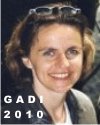All Handouts for this year Workshop at ED-MEDIA Conference in Toronto on „M-Learning – on the Move towards a Wired Society?“ are now online available in different formats for different devices:
[presentation] EduPunk – possible in Higher Education Environments?
Our presentation at this year ED-Media Conference in Toronto:
[presentation] Personal Learning Environment in Higher Education
Our presentation at this year ED-Media Conference in Toronto:
[presentation] Has Web 2.0 Reached the Educated Top?
Our presentation at this year ED-Media Conference in Toronto:
[presentation] RT @twitter ist die Uni auf Facebook? #DigitalUniversity #l3t
Meine Präsentaton für den E-Learning-Tag 2010 an der Universität Innsbruck ist ab sofort online zugänglich. Ich stelle hier vor allem die letzten Umfrage Ergebnisse vor und durchleuchte mit welchen Vorkenntnissen, Erfahrungen, Kompetenzen Studierende an unsere Universität derzeit gelangen [Abstract]:
[publication] Die Standortattraktivität europäischer Hochschulen fördern? – Der mögliche Beitrag von Open Content
Mit Sandra Schaffert habe ich einen kurzen Beitrag in der aktuellen Ausgabe „E-Learning und Bologna“ (hrsg. von Rolf Schulmeister) der Zeitschrift für E-Learning geschrieben, der sich mit dem Thema Open Content aus Perspektive der PR von Hochschulen befasst, er trägt den Titel „Die Standortattraktivität europäischer Hochschulen fördern? – Der mögliche Beitrag von Open Content„. Die ursprüngliche, nicht überarbeitete Langfassung des Beitrags haben wir online gestellt:
[CfP] Research 2.0 at ECTEL 2010
Ich möchte auf einen Call for Papers hinweisen: Workshop Research 2.0 bei der diesjährigen ECTEL Konferenz:
As a follow-up to a successful workshop on the same theme at ECTEL09, we are organizing a workshop on Research2.0 approaches to TEL research at ECEL10.
Research2.0 is in essence a Web2.0 approach to how we do research. Research2.0 creates conversations between researchers, enables them to discuss their findings and connects them with others. Thus, Research2.0 can accelerate the diffusion of knowledge.Topics for this workshop include, but are not limited to:
- Evaluation of existing Research2.0 tools and infrastructures from a TEL perspective
- Development of TEL-related use case scenarios for Research2.0 tools and infrastructures
- Influence of Research2.0 tools and technologies on scientific practices in TEL
- Formats and protocols for Research2.0 data exchange (linked data, RSS, BuRST, …)
- Ownership and privacy of research information
- Practices of the diverse Technology Enhanced Learning disciplines, and how Research2.0 can influence them
[GADI2010] Informationsgesellschaft und Clean-IT
 Der letzte Termin der heurigen Vorlesung „Gesellschaftliche Aspekte der Informationstechnologie“ an der TU Graz besteht aus folgenden 2 Vorträgen:
Der letzte Termin der heurigen Vorlesung „Gesellschaftliche Aspekte der Informationstechnologie“ an der TU Graz besteht aus folgenden 2 Vorträgen:
- Markus Kainz: „Umgang mit der Informationsgesellschaft“ (Facebooklink)
- Katherina Deman: „“Clean-IT“ (Facebooklink)
Beide Vorträge werden live gestreamt – Link zum Streamingserver
Weitere Vorträge/Abstracts findet man hier auf der Vorlesungshomepage.
Vortrag „RT @twitter ist die Uni auf Facebook? #DigitalUniversity #l3t“
Im Rahmen des E-Learning Tag 2010 an der Universität Innsbruck bin ich gebeten worden rund um unsere Erfahrungen und Untersuchungen zum Thema Digital Natives an Universitäten zu berichten. Ich habe den provokativen Titel „RT @twitter ist die Uni auf Facebook? #DigitalUniversity #l3t“ gewählt und der Abstract meines Vortrages lautet:
Die Digital Natives, die Netgeneration, die Generation @ oder wie man sie auch immer bezeichnen möchte stehen am Übertritt zur Hochschule. Oder ist dies nur ein Mythos einer von technologischen Neuerungen geprägten Zeit? Dieser Vortrag beleuchtet das Thema einer möglicherweise völlig digitalisierten Jugend anhand von Daten, die auf Umfragen aus den letzten drei Jahren basieren. Aufgrund dieser Befragungen an der Technischen Universität Graz kann ein Bild der heute Erstemstrigen gezeichnet werden, welches sowohl infrastrukturelle, organisatorische als auch didaktische Entscheidungen beeinflusst.
Freu mich auf spannenede Diskussion am 22. Juni in Innsbruck.
[podcast] u-Learning? Future of Education from a technical perspective
Im Rahmen der 2. Zukunfstwerkstatt des Forum Neue Medien Austria durfte ich das Impulsreferat rund um das Thema „u-Learning? Future of Education from a technical perspective“ halten. Die Folien sind bereits hier veröffentlicht, jetzt folgt noch der VodCast auf iTunesU.
Weiters gibt es hier eine kleine Nachlese der gesamten Veranstaltung.
